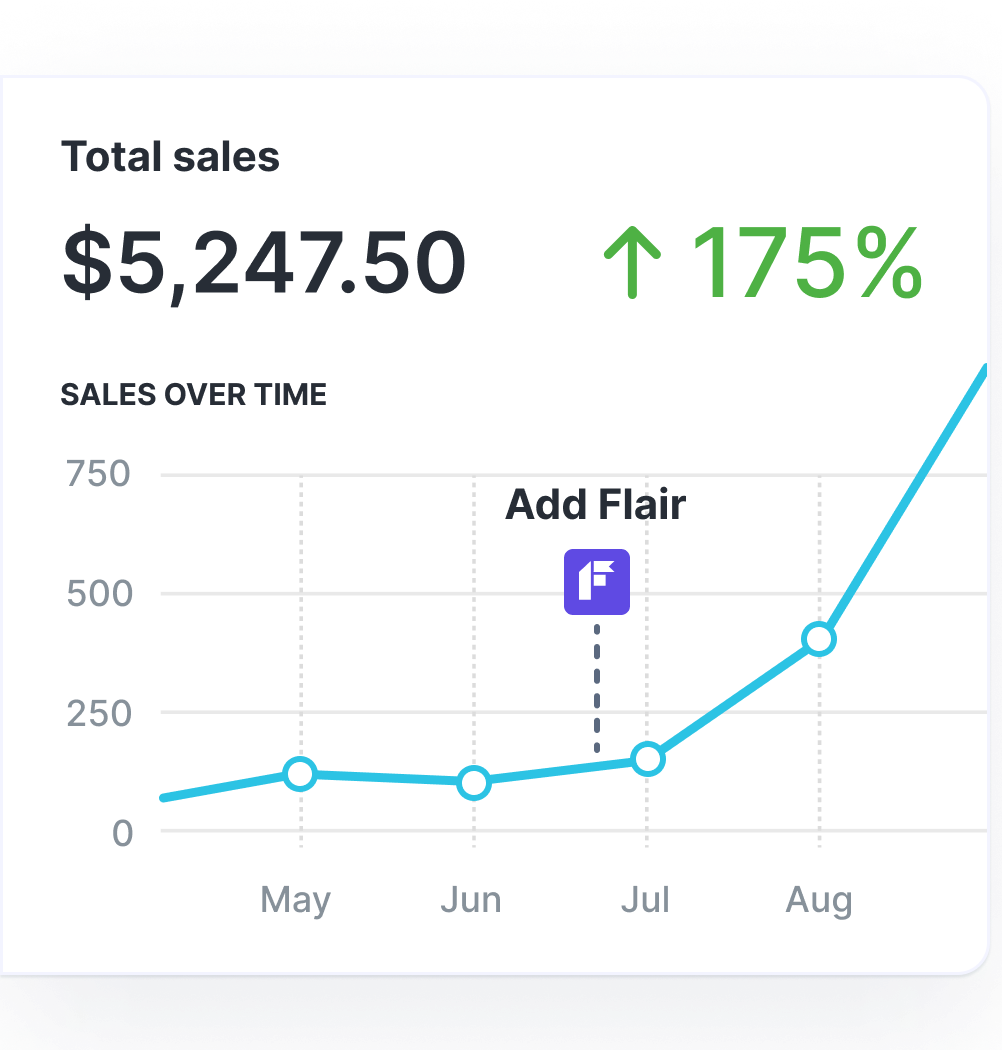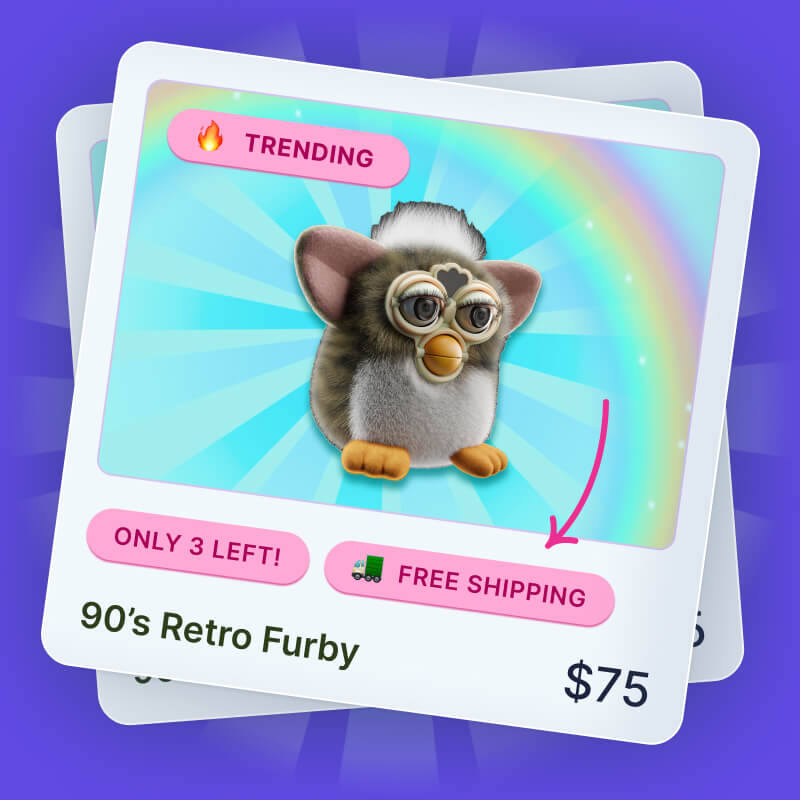Competitive Pricing: The Definitive Guide

Customer support; user experience; product quality. All play an important role in smoothing the path to purchase.
But one factor stands head and shoulders above the rest when it comes to motivating consumer buying decisions: product pricing.
Nailing your pricing strategy can help increase your conversion rate, sales, and revenue. It can even make your products look more attractive than those of your rivals. In this article, we’ll discuss one of the most common strategies, competitive pricing. Read on to learn:
- What is competitive pricing?
- What are the benefits and risks of competitor-focused pricing?
- What best practices should you follow when using a competitive pricing strategy?
- What tools can help maximize your competitive pricing success?
What Is Competitive Pricing?
Competitive pricing is about setting strategic price points for your products based on the pricing of similar products sold by competitors in your market. For instance, a makeup brand might assess how much their biggest rivals charge for lipstick, then set their own lipstick prices accordingly.
The most obvious use case for competitive pricing is to undercut your competitors, giving customers a price-best incentive to buy from you. But, as we’ll discuss in the next section, that’s not the only form of competitive pricing…
Competitive Pricing Strategies

There are three main competitive pricing models for retailers to follow:
Lower Pricing
Pricing your products lower than the competition gives you an obvious point of difference — especially if they’re of comparable quality. Because who doesn’t love saving money?
Of course, lower pricing cuts into your margins, making you less profitable. For that reason, it tends to be used in two scenarios:
- Leveraging economies of scale: If you’re able to buy in bulk, you can sell your products cheaper without hurting your margins.
- Promoting a “loss leader” product: Selling a product for lower than the cost price can help you attract new customers who’ll (hopefully) go on to purchase more expensive products. This tactic is often used by disruptors entering new markets.
Equal Prices
Another approach is to set equal prices to your competitors. Essentially, this removes price from the equation (at least for customers who are comparing you to the brand whose prices you’ve equalled), allowing you to differentiate on factors like:
- Company values
- Product quality
- Customer experience
- Product features and benefits
- Shipping times
For instance, you might gain a competitive advantage by emphasizing your sustainable manufacturing or shipping processes.
Price Matching
Price matching is essentially a subset of equal pricing, except it puts the emphasis of price comparison on the customer. If they find a similar product elsewhere at a cheaper price point, you agree to honor that price.
This strategy is especially useful in fast-moving markets, where brands and retailers regularly update their prices. That way, you don’t have to constantly monitor competitors’ prices and adjust your own to match.
It also helps you convert price-conscious customers without forcing you to permanently lower prices on specific products.
Higher Prices
It might sound counterintuitive, but charging more than your competitors can be a totally viable pricing strategy that emphasizes the premium nature of your products. It’s most often used by businesses with long-established and highly regarded brands that are looking to maintain their status at the top of the market.
Selling premium products can help you attract higher-spending customers who are less interested in finding a bargain and more focused on quality.
Of course, this strategy isn’t without its risks. Even if you consumers love your product, they might still be swayed by a cheaper competitor.
Price Skimming
A slightly different take on a “classic” higher pricing strategy is price skimming: charging a high price for a new, in-demand product, then lowering it gradually over time.
This approach works best for innovative brands offering game-changing products. Early adopters will be happy to pay a premium to get their hands on your shiny new gizmo, maximizing revenue while your product is fresh. Then, when your rivals start to catch up, you can drop your prices to target more cost-conscious customers.
Benefits of Competitive Pricing
Most competitive pricing strategies require at least some effort on your part to keep tabs on what your rivals are charging. But there can be big rewards for getting it right:
Increased Profits
If your prices are lower than those of your competitors, there’s scope to increase them — thereby boosting your profit margins — while still undercutting your rivals. Alternatively, you can match your rivals’ prices and rely on your unique value proposition to close the deal, or even set higher prices (provided you’ve got the product quality or innovation to match).
Attract New Customers
Undercutting your competition is arguably the easiest way for retailers to attract price-sensitive customers shopping around for the best deal.
Build Customer Loyalty
Let’s be clear: you’re extremely unlikely to build a loyal customer base if you’re overly reliant on beating your competitors’ prices. In a truly global economy, there’s always going to be a cheaper alternative out there.
However, if customers love your product and feel your prices compare favorably with the competition, they’re more likely to stick with you — leading to increased satisfaction, more repeat business, and a higher customer lifetime value.
Better Market & Customer Understanding
Effectively executing a competitive pricing strategy requires a deep understanding of market conditions and your competitors’ approach to pricing. All that research and data should give you a clearer understanding of your customers and help you strengthen your value proposition.
Increased Market Share
From Netflix to Uber, there are countless examples of brands using an aggressive, competitor-focused pricing strategy to rapidly expand their market share — before increasing their prices once they reach a position of dominance.
The Risks of Competitive Pricing
Few things in the world of e-commerce are 100% risk-free, and competitive pricing is no different. Here are some of the biggest reasons why competitor-focused pricing might be a poor fit for your brand or market:
Limited Differentiation and Innovation
Apple didn’t become one of the world’s biggest and best-loved tech brands by constantly striving to undercut its rivals.
Instead, the company reached its current position of eminence by making high-quality, innovative, and highly rated products, backed up by fantastic customer support. Had it focused solely on competitive pricing, it might have overlooked all that other important stuff.
When you obsess over competing on price, you run the risk of ignoring innovation and differentiation, giving customers little reason to choose your products.
Potential Brand Image and Reputational Damage
For some consumers, low prices denote excellent value for money. But for others, price speaks to quality: if the price is cheap, the product must be bad. All of which means that if your pricing strategy relies on undercutting your competitors, you risk people perceiving you as a cheap, low-quality brand.
Reliance on Competitor Pricing & Market Conditions
Another obvious downside to competitor pricing is that it effectively hands over the reins of your pricing strategy to your biggest rivals.
If they slash their prices, you (might) have to cut yours too, leaving you constantly adjusting prices to keep pace with market conditions. And if you’re hit by an increase in costs that doesn’t affect your competitors, you might find it tough to raise your prices, potentially forcing you to live with much tighter margins.
Best Practices for Competitor-Focused Pricing
Competitive pricing clearly isn’t a silver bullet to smash your sales and revenue goals. But used intelligently, it can help you stand out from your rivals, strengthen your value proposition, and boost conversions.
Before you embark on your competitor-focused pricing journey, check out these best practices to give yourself the best chance of success…
Conduct Thorough Market Research & Analysis
The first step in implementing a competitor-focused pricing strategy is to understand the lay of the land by analyzing what your rivals are up to. Follow these steps to perform a basic competitor pricing review:
- Identify ~5 of your biggest competitors. Retailers selling similar products to similar customers.
- Build a (brief} value proposition for each competitor brand. In a few bullet points, set out their position in the market, who their ideal customers are, and how they differentiate themselves.
- Set a fixed study period. Say, three months from the time you start your analysis.
- Review pricing models. Identify competitor price points and promotional offers. Group this information into a spreadsheet, either by the most similar individual products sold by each retailer, or as an average across a product category. Check back in throughout the study period to check your data is up to date.

- Track how often they run sales and other price discounts during your study period. How generous are their discounts? Are they sitewide, or limited to specific product categories?
- Crunch the numbers. Calculate the average price each brand charges for a given type of product, factoring in sales and other discounts.
Unless your niche operates to extremely tight margins, you’ll likely be left with a pretty broad range of prices. Now you can decide where you want to fit in.
Establish Clear Pricing Objectives & Goals
Remember: your pricing strategy must align with the overarching goals of your business, your position in the market, and your existing value proposition.
To give a couple basic examples, if you’re a new market entrant with little or no brand awareness, it’ll be tough persuading customers to pay a premium for your products. Or if you’re a sustainable clothing brand, you probably don’t want to start a price war with a fast fashion powerhouse like SHEIN.
Start by setting clear pricing goals: do you want to grow your market share? Maximize revenue? Maintain healthy profit margins?
Then put numbers to your objectives, such as your minimum expected profit margin or desired year-on-year revenue increase. That way, you can set a pricing strategy that supports rather than undermines your business goals.
Determine Pricing Strategy Based on Market & Customer Insights
Unless you’re a brand new business, you should have a decent amount of previous sales data to analyze, and at least some idea of who your customers are and why they buy from you. Those insights will be invaluable in setting your pricing strategy.
Dig into your historical data to understand how different price points and strategies affect factors like:
- Average order value
- Repeat purchase rate
- Customer lifetime value
- Sales volume
- Total revenue
Then survey your customers. Find out what persuaded them to choose you over your rivals, whether they believe you offer good (or great) value for money, and if they’re likely to buy from you again.
Finally, remember your business doesn’t exist in a vacuum. There are lots of other factors that might boost or limit the effectiveness of your pricing strategy, from changing consumer spending habits to increasing supply chain costs. Your approach must be flexible enough to deal with those external forces.
Monitor & Adjust Prices Regularly
Building a competitor-focused pricing strategy isn’t a one-and-done activity; it requires constant monitoring and adjustment based on factors like supply chain disruption, changes to customer demand, and the arrival of new disruptors in your market.
Furthermore, your goals will inevitably change over time. As your business matures and gains market share, you might switch from being a cut-price disruptor to a market leader selling quality products at a premium price point.
For that reason, you should regularly review your prices — and pricing strategy — to ensure they’re continuing to support your business goals. At the same time, you should avoid imposing overly aggressive or frequent price changes, which risk confusing customers and damaging your brand.
Tools to Help With Competitive Pricing
Competitive pricing strategies require a ton of legwork. Fortunately, there are plenty of tools to help you out; here are some of our favorites…
| Tool | Price | What it does |
| Competera | On request | Scrapes data from any region, currency, or language and adds it to a single dashboard; automatically adjusts prices based on market changes. |
| Fluxguard | On request | Leverages ChatGPT to detect changes on competitor websites. |
| Skuuudle | On request | Matches and tracks product names, descriptions, prices, promotions, availability, reviews, and more. |
| Symson | From €497 per month | Uses AI and machine learning to analyze customer data, research market trends, and recommend product prices. |
| Visualping | $0 – $100+ per month | Monitors specific URLs and notifies you via email when anything on them changes. |
Other FAQs

Grow Your Shopify Sales by over 175% with Flair
-
Increase sales using product badges and sales banners
-
Maximize conversions with scarcity, urgency and countdown timers
-
Automate promotions with targeted rules and scheduling
How Do I Create a Competitor Price Monitoring Strategy?
You can monitor competitors’ prices using this five-step process:
- Identify your biggest competitors.
- Set your monitoring period (e.g. every month).
- Review their prices across individual products or top-level categories and subcategories.
- Track how frequently they run sales and other price promotions.
- Calculate the average price each competitor charges for a given product.
Step #3 requires a lot of manual work, so you might want to invest in a data-scraping or price-monitoring tool to ease the strain.
What is More Effective, Psychological or Competitive Pricing?
It depends on your market and product. A shopper in a brick-and-mortar supermarket is unlikely to know the exact price of similar products sold by other retailers, making psychological pricing (such as multi-buy offers or rounding down from $10 to $9.99) more impactful. Consumers are far more likely to shop around in the world of online retail, making competitor-focused pricing a more effective strategy.
How Do I Price a Product That Has No Direct Competitors?
If your product has no direct competition, you need to search for the closest possible match, then set your prices accordingly. Also, conduct market research to find out how much your ideal customers would be prepared to pay for a product like yours.
What Is Penetration Pricing Strategy?
A penetration pricing strategy is a form of customer acquisition in which businesses set lower prices than their competitors in a bid to lure away customers and expand their market share. As such, penetration pricing is often employed by companies aiming to enter and disrupt mature, competitive markets.





